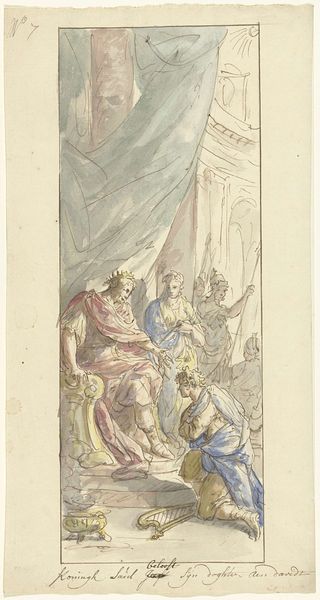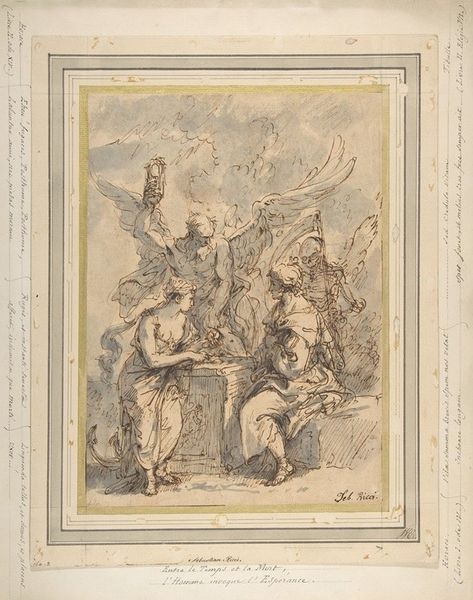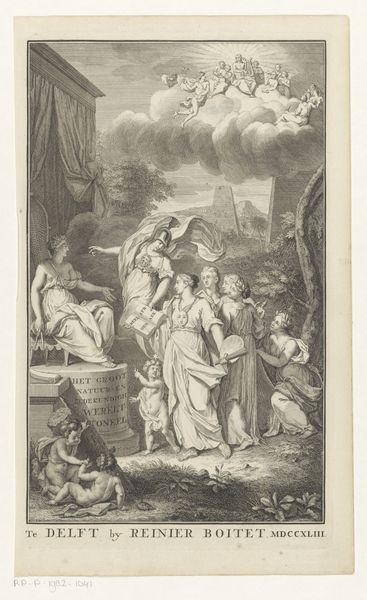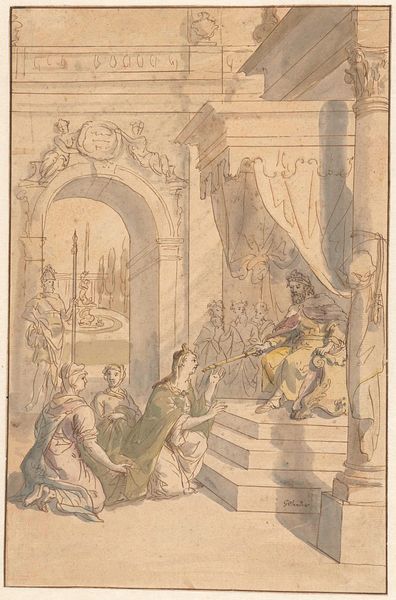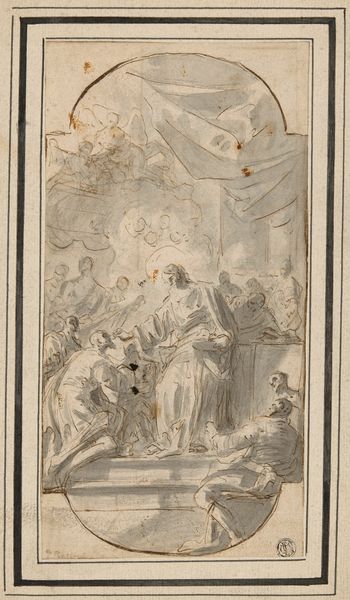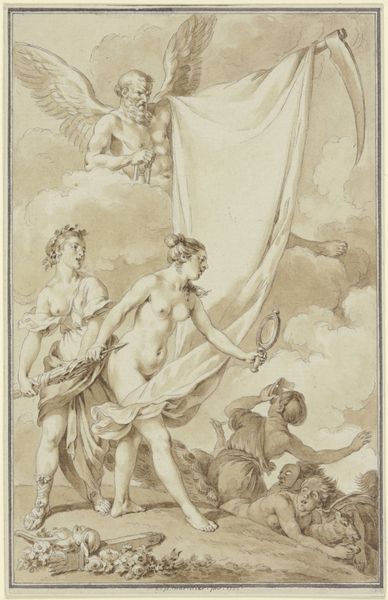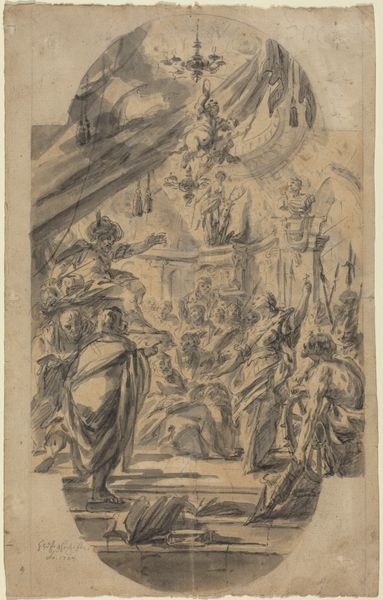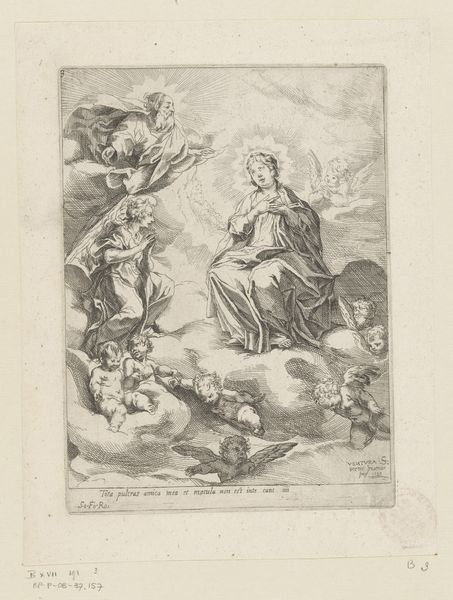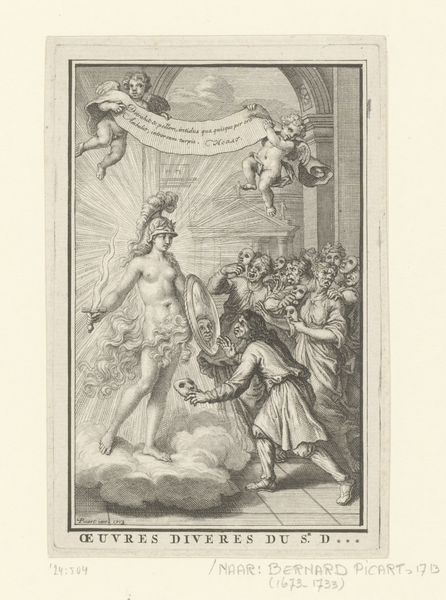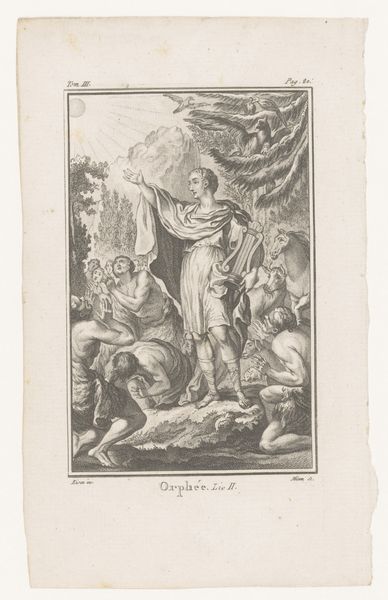
painting, watercolor
#
allegory
#
baroque
#
painting
#
figuration
#
watercolor
#
history-painting
#
watercolor
Dimensions: height 280 mm, width 205 mm
Copyright: Rijks Museum: Open Domain
Editor: This watercolour, titled "Allegorie op de handel ter zee" or "Allegory on Maritime Trade," created by Elias van Nijmegen between 1677 and 1755, features classical figures amidst symbols of trade. It feels a bit like a stage set. What stories do you think this piece is trying to tell about trade and its place in society? Curator: The prevalence of allegorical works like this tells us about the aspirations and self-image of the Dutch Republic during its Golden Age. Think of trade not just as economic activity, but as a source of national pride and international power. How do the figures reinforce this? Editor: Well, the central female figure seems to be a personification of trade. She is adorned with symbols and has children carrying gifts, but what is the connection to a wider society? Curator: Note the inclusion of what appears to be a statue to the left, and what seems like an enslaved man working next to packages on the right. Doesn't that offer clues to whose hands supported the Golden Age, and for whom this wealth was generated and distributed? Editor: It does recontextualize the allegorical figures! They now stand in for not the people actually benefiting, but a fictional character that supports exploitation in real life. Curator: Exactly. The painting offers us a window into the values the commissioners hoped to broadcast to the public about power, trade and governance. Do you think their perception became our shared understanding of trade over the course of history? Editor: I think my own understanding definitely changed. Considering the figures portrayed here as characters with a hidden, much darker story offers a completely new perspective!
Comments
No comments
Be the first to comment and join the conversation on the ultimate creative platform.
